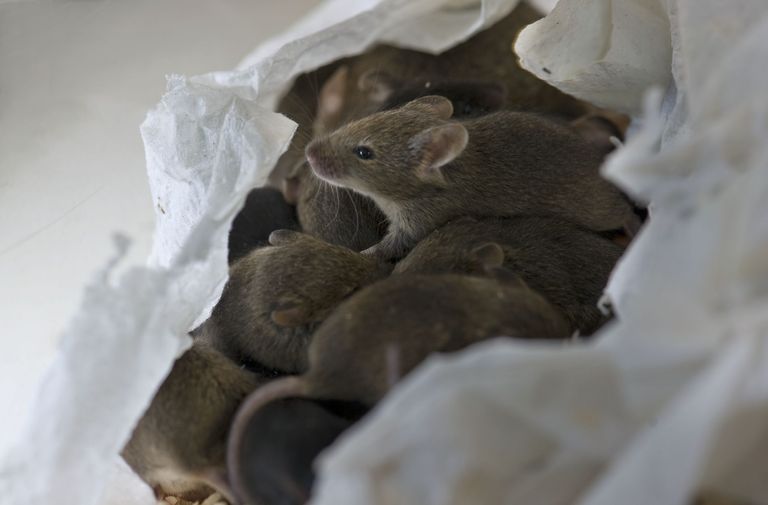Which therapies do we owe to animal experiments?

Practically all medicines and very many medical products available today were developed with the help of animal experiments. Millions of patients therefore benefit from the results of research involving animal experiments. Thanks to animal experiments, we were able to discover antibiotics, insulin, vaccines, or heparin and develop organ transplants, surgical techniques or implants. Animal patients also benefit from these results.
Many people are not aware that in earlier decades polio, for example, was a major health problem that was only solved through research, which included animal experiments, and resulted in an effective vaccine. Similarly, today, around 80% of children suffering from leukaemia can be cured thanks to research on animals.
Since 1900, the Nobel Prize for Physiology and Medicine has been awarded around 70 times to researchers whose ground-breaking discoveries were also made with the help of animal experiments. These include, for example, the discovery of insulin and penicillin, the mechanisms of HIV infection or findings about the immune system or the brain.
Studies on animals were essential for the development of most medicines. Two examples are penicillin, whose discovery made the development of antibiotics possible, and insulin. Only when its role in regulating blood sugar levels was understood was it possible to treat diabetes.
Penicillin
In 1928, Scottish scientist Alexander Fleming discovered in a petri dish contaminated with moulds that bacteria did not survive where the fungi grew. This was the beginning of the success story of antibiotics and the active ingredient penicillin. The first experiments to show that penicillin could cure a bacterial infection were carried out on mice in 1940. The animals survived an otherwise fatal infection with streptococci thanks to penicillin. Conducting such experiments on humans is prohibited for ethical reasons. Mice as experimental animals were therefore irreplaceable to prove the effectiveness of penicillin. A year later, it was used in humans for the first time, and since then often life-saving antibiotics have been an integral part of human and veterinary medicine.
Insulin
The effect of insulin in treating hypoglycaemia was discovered in studies with dogs. For a long time, insulin was obtained from the pancreases of slaughtered cattle and pigs. Today, it is mainly produced with genetically modified yeasts and bacteria. Insulin is also used successfully in veterinary medicine, for example to treat dogs suffering from diabetes.
Covid-19 vaccines
Animal research has been instrumental in helping researchers understand SARS-CoV-2, the mechanisms of its transmission, and studying the safety and efficacy of all vaccines produced to date, helping humanity getting one step closer to ending the Covid-19 pandemic. Animal research has paved the way for basic research and drug development over the years. Mouse models used to study the disease had been developed to study other coronaviruses years before Covid-19 occurred. Tests on genetically modified mice, on rats, ferrets, hamsters, dogs, and monkeys were carried out for the development of the vaccines. Ferrets and hamsters can become infected with coronaviruses and show similar symptoms to humans. Dogs could be trained to identify people with Covid 19 infection using their sense of smell, and thanks to their similarity to humans, monkeys are again a valuable model for understanding how the virus affects the immune system. While most research is done with rhesus monkeys to understand how the virus works, baboons have also been used to study the possible consequences of Covid-19 infection in elderly people or in patients with underlying diseases.
HIV treatment
The treatment of human immunodeficiency virus (HIV) would never have come about without animal experiments. The HIV pandemic has claimed an estimated 39 million lives since the early 1980s. Today, HIV infection can be treated with a combination of over 20 different drugs. This combination therapy must be taken for life, but thanks to this treatment, HIV infection is no longer a death sentence.
Implants and medical devices
Animal experiments have been used to develop a wide variety of implants. Orthopaedic implants are used when the spine or limbs have been damaged by injury, degenerative musculoskeletal conditions, infection, or congenital disorders. Orthopaedic implants for humans are often tested on larger farm animals such as sheep. So-called cochlear implants, which help people with hearing problems to hear again through electrical stimulation of the cochlea, have been developed in studies on cats and primates. Experiments on animals have allowed innovations in medical technology, such as the development of artificial heart valves and pacemakers, which are now part of the medical standard and are indispensable.
Cancer treatment
Cancer is one of the most complex diseases for researchers in biomedicine, as it has a wide variety of manifestations, affects different organs and tissues, and can have a multitude of causes. Cancer research, which has made considerable progress in the last century, mainly uses mice, rats, and other small rodents. The mouse is by far the most important animal model in cancer research. Animal experiments were and are necessary for the development of surgical techniques, radiation therapy and chemotherapy. Active substances that activate the body's own defence system against cancer or inhibit the multiplication and spread of cancer cells in the body can only be tested in a living organism. Today, thanks to this research, up to 90 per cent of women who develop breast cancer for example are still alive at least five years after diagnosis.
Piglet castration
Most male piglets intended for fattening are now surgically castrated because the meat of male pigs can develop a very unpleasant odour and is therefore considered unsaleable. Until the end of 2009, castration was also permitted without anaesthesia for younger piglets. Today, castration must be carried out under general anaesthesia, or the piglets are administered a vaccination which causes limited suppression of testicular function. The development of these procedures has been tested in animal experiments.


